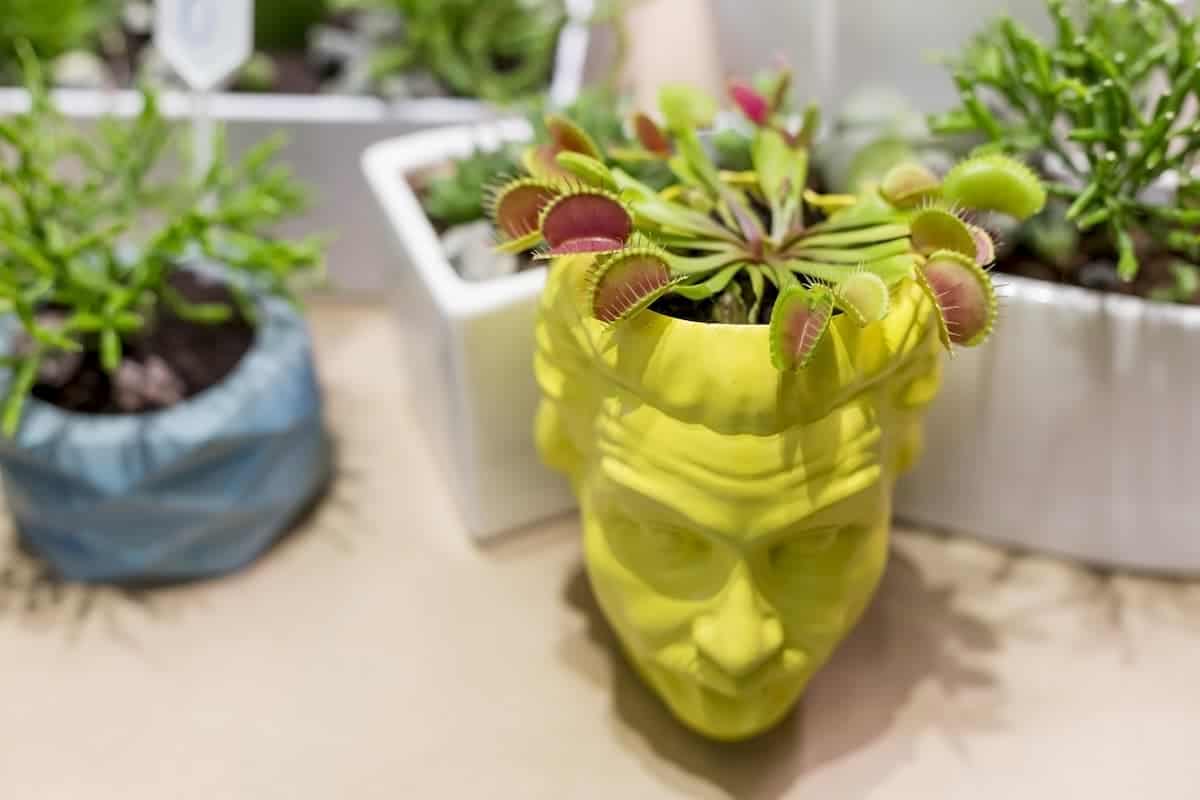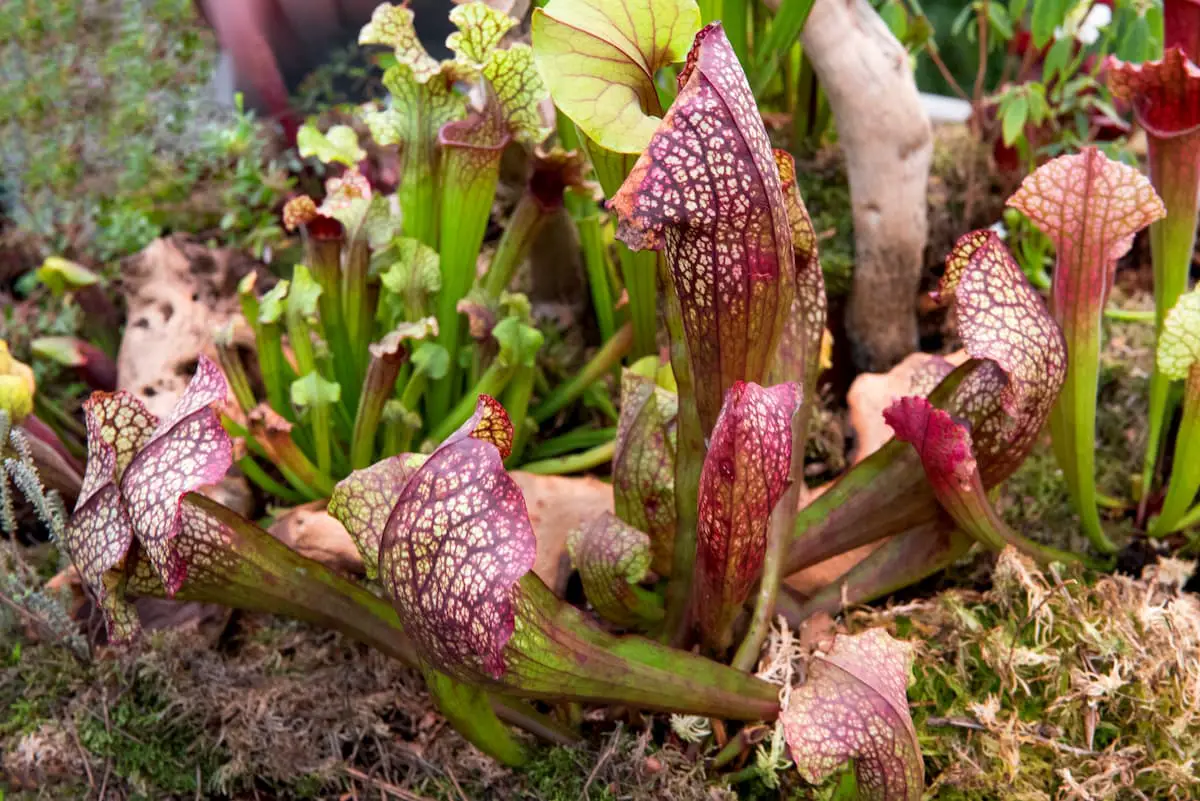Venus Fly Traps are probably the most exotic type of plants out there for their unique characteristics and a primarily carnivorous diet. Having a Venus Fly Trap is as exciting as it can be. They are fun to feed and look after.
Their exceptional looks and creepy environment make them the very exotic type of plants and their sensitive hairs, making them look like a pet when they close it. An issue Venus flytrap owners face is what to feed those fly traps.
What should I feed my Venus Fly Trap? The main answer is typically going to be nothing, but if you don’t have many bugs or insects inside your home with your plant you may want to supplement their intake. This can be done with many options from live insects to freeze-dried and packaged insects.
Almost everyone is aware of the fact that Venus Fly Traps eat flies, but in the environment of your home, flies may be very seldom available for them.
This means that you need to come up with a different food source to feed your plant to keep them strong and healthy. In this article, we shall be talking about the list of foods you can feed your plant.
Basic Requirements For Your Venus Fly Trap
Before we start our list, we need to get some basic innuendos out of the way. If your plant is relatively young and needs to grow much more, then you probably won’t need to feed it anything.
The plant can be much healthy while being in the sunlight, having access to proper water, and a clean environment. Without your help, the young plant can satisfy its nutritional requirements when it is young.
Taking care of your plant’s basic needs will help your plant grow beautiful and colorful traps. The basic needs of the Venus flytrap are discussed below.
The Location
The first building block is the growing location for your plant. Venus Fly Traps require direct sunlight for their growth. Therefore you need to put your plant in an optimal where it has full access to sunlight.
If you have chosen to keep your plant indoors, you need to keep your plant near a bright window to get exposure to bright sunlight. If the plant doesn’t receive enough sunlight, it won’t grow bright-colored traps, and its leaves become sloppy.
Artificial lighting works well for these plants as well, as long as the bulbs are high-powered fluorescents. Venus Fly Traps do not need a terrarium; however, you can put them in one as long as you take care of their needs.
Do not panic when you see different color petals throughout different seasons growing on your Venus Fly Trap. The Venus Fly Trap grows different colors of leaves throughout different seasons.
The leaves produced in spring and autumn tend to be lower-growing and bear heart-shaped petioles. The leaves produced during summer tend to be narrow and bear elongated petiole.
The Seeds
Venus Fly Traps tend to grow in the spring season just like most of the plants, but if you have experience with growing Venus Fly Traps, then there are some basic stuff you need to do. Cut off the stalk of the flower when it reaches 5 cm height.
Watering And Soil
The next thing you need to do is to provide your plant with an optimal amount of water and a nutritious soil to grow in. Venus Fly Traps require pure water.
Giving them tap water, or any water with mineral content can be harmful to them and can lead to the buildup of harmful minerals in the plant body.
Set up an optimal reverse osmosis system, avoid fertilizers, which decrease your plant’s chances of receiving nutrients so it can grow happily and be healthy.
Venus Fly Traps prefer to grow in wet soil, so you need to avoid watering from the top and keep the posts under 1cm of water to promote the plant’s fitness.
Now, as we are done with the Venus Fly Trap plant’s necessities, let’s look at the gist of today’s blog.
What Foods You Can Feed Your Plant Besides Flies?
If one is keeping their Venus Fly Trap indoors, then the chances are that the plant won’t be able to always have access to plenty of flies, which will mean that one will have to feed the plant manually, so before we start the list, let’s get some rules out of the way.
- Never feed your plant anything which it won’t have access to if it were in a natural environment. Or, in other words, simply do not feed it stuff like chicken or beef, only feed it insects.
- Do not give your Venus flytrap fertilizers; the reason is simple, your Venus flytrap plants are not like other plants. They prefer different soil.
- Never over feed your plant.
- Do not feed the plant anything larger than the trap.
- The plant requires being stimulated to start the digestion process. Normally, the trapped bug’s movement acts as a stimulus but if you are using a dead insect, then use a toothpick to stimulate the inside of the bug’s trap gently.
With those concerns out of the way, let’s start the list.
Meal Worms
Mealworms are a healthy food source for your plants, and they are available in many pet stores. Mealworms are frozen and dried worms that are rich in nutrients and one of the best options to feed your plant.
Since your Venus Fly Traps do not require too much food as compared to the carnivorous for which the worms are for, you can feed many of your plants with a small tub for a long time. Depending on the worm, the size might be too big or too small for the plant.
If the worm happens to be too big, then you have to cut the worm into two small parts. Always remember to rehydrate the worm by adding small drops of water with the worm.
Soak the excess water using a handkerchief and gently place the worm inside the plant trap and then stimulate the inner side of the trap by a toothpick to kickstart the digestive process.
Blood Worms
Blood worms are another healthy and nutrient-rich food source for your Venus Fly Trap. Just like mealworms, blood worms are also freeze-dried and are readily available in pet stores.
Small tubs or pots of blood worms are available on cheap prizes at aquariums.
Follow the same process with blood worms; simply take a bunch of blood worms and rehydrate them by adding drops of water. Soak up the excess amount of water using a handkerchief. Add a pinch of blood worms in the trap of the Venus Fly Trap.
After putting the blood worms inside, proceed to stimulate the inside of the trap by gently using a toothpick so you can kickstart the digestive process.
Crickets
Crickets in a dried form are easily available in stores and are used to feed fishes and can be a very healthy and nutritious food source for your plant.
You can buy them at a low price from pet stores. Simply add one cricket into the trap of your Venus Fly Trap and then stimulate the inside of the trap by using a toothpick, so the plant starts digesting the cricket.
Caterpillars
Small insects are Venus flytrap’s favorite food; you can store a variety of insects in your fridge for your plant to eat, and caterpillars are one of them.
However, you should be giving your plant any live caterpillars because then you run the risk of the caterpillar eating your plant from the inside.
Other Bugs
Venus Flytraps would eat all insects which are smaller than the trap. Therefore you can feed your plant various kinds of bugs, caterpillars, spiders, millipedes, centipedes, sowbugs, beetles, and grasshoppers.
Feeding Your Venus Flytrap Live Meals
Feeding your Venus flytrap comes with both pros and cons. While feeding your Venus flytrap live insects eliminates the need for stimulating the inside of your Venus flytrap by using a toothpick, it still creates problems.
The problems associated with feeding your Venus flytraps depend on what insect you are feeding your plant. If you are feeding your Venus Flytrap live caterpillars, then it’s excepted that the caterpillar may attempt to start eating the Venus Flytrap from the inside and escape.
Live worms tend to move a lot and burrow out of the trap as well. That’s why people prefer mostly frozen and dried versions of the blood worms and mealworms to feed their plants as they tend to be easier to feed the plant.
Crickets are very quick, and live ones can easily escape your attempt to place them in your plant’s trap and would end up leaving your plant hungry. Simply put, the easiest option is to feed your plants with dead worms and crickets.
However, if you want to feed your plant live meals, then you should first store the live insects in the fridge to stun them and impede their movement, so when you put them in the trap, they do not move much.
This way, you will be able to feed your plant without the insect’s risk escaping the trap. You can additionally Proceed to slightly break the legs of the insects you are feed to your Venus flytrap to ensure that the insect does not escape the Venus flytrap.
Final Thoughts on What Should I Feed My Venus Fly Trap
Choosing the best option for foods really will come down to your personal “ick” factor and whether you believe live food or freeze dried will help your plant more.
Personally the freeze dried has been dramatically simpler for me and I would not be personally interested in live food and dealing with the wiggles!




Leave a Reply